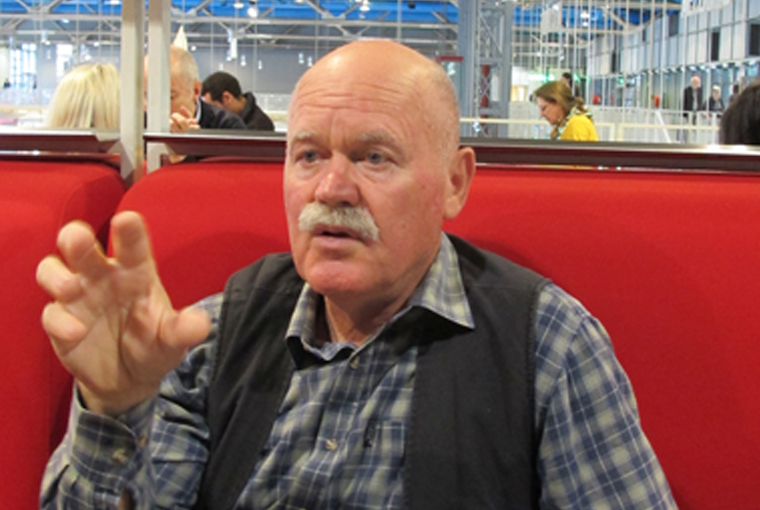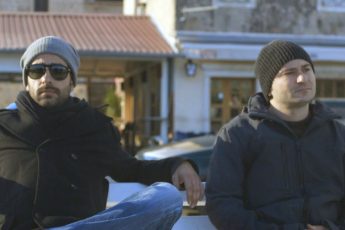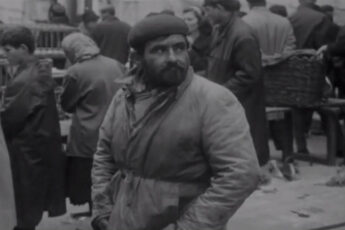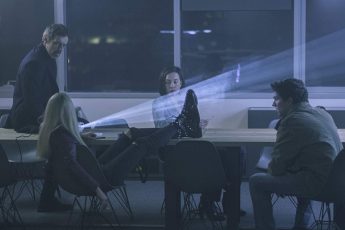
Interview with Ivan Ladislav Galeta following the retrospective of his work at the Pompidou Center.
Do you consider yourself to be a Balkan video artist?
This is a very delicate issue. In recent years the Balkans have become very popular in the context of art. Let’s say, exotic. I’m not comfortable with being in that context. I hope that you know what Balkans actually means as a name? Apart from “mountain” in Turkish, Balkan is also composed of two Turkish words: “bal” means honey and “kan” means blood. You know who uses that name in art? For me the Balkans are the Balkans, and I appreciate that. It is a very specific, authentic area of life and culture. Many Western people use this term, but few of them really understand what it means, and what has happened in that relationship. I have to say I’ll try to keep out of politics. When people make classifications like this, it always leads to a political argument. And I do not want to take part in that.
Why did you first start doing video art ?
First I did super 8 films. I started in 1968. At that time I was a sportsman, water polo player for ten years, so one of my films, Water Pulu 1869 1896, was inspired by that. At that time in Yugoslavia water polo was a really top level sport. I was also a table tennis player. The ball interets me as a kind of sphere. An almost perfect shape. I am mostly interested in its inner part. For me, internal concentration is important – how I can provoke ordinary media possibilities and extract a new, „inner“ experience from that. Later, video also helped me in that kind of contemplation.
Who did you want to provoke?
I wanted to provoke myself and the media as such. For example, in the seventies I made a lot of original photographic pieces by manipulating original photo negatives directly with paper. I would make a shot of myself and then enlarge the image; with a pushpin I would fix the pupil of my right eye on the photo paper and then with a longer exposure I would turn it by 360 degrees. So as a result you can’t see my face, because it is hidden in the streak. “Representation of reality through the lens of the camera should always hide more than it reveals,” Susan Sontag said.
What about film?
The basic thing in film is that it doesn’t move! When I was teaching at the Art Academy in Zagreb, I always said to my students: believe me, in a film nothing moves, this is illusion of movement, and this is real illusion. It goes photo by photo across a projector. What is moving? Just the film tape. The frames are not involved in the movement. Frames are interchanging with darkness between each of them. You must cut the light when the next frame is coming. What does it mean? Without that cut – darkness, the film doesn’t exist! Invisible darkness, better said, interruption of light is the basis of film! And that´s a fact! Sometimes, in real life, the invisible is the basis of the visible, or the visible is the basis of the invisible. When you balance these complementarities you can start to use media in their authenticity. That’s why to a certain extent I prefer Buster Keaton over Charlie Chaplin. Of course, regardless of that both of them were cinematic geniuses.
What led you from sports to film ?
In ’73 I was already coming up with ideas for films, while I was still doing sports. I was waiting for professional possibilities that would enable the making of something like this. The film Water Pulu 1869 1896 is very complicated, because it has a special structure. We put four microphones under the water, in the four corners of the swimming pool, one microphone was on top. That combination of sound for me was very important. The main thing was how I could stop the ball in relation to the pool frame and film frame. This is a paradox: something that is moving in reality is not involved in movement at the same time. I call it re-animation! In film history you have many examples of connecting movement of the camera with reality. Usually the camera is physically connected with something in movement. In Water Pulu 1869 1896 the ball and the camera are not in physical connection. When I got professional tools to make this film, an optical printer, ten thousand images frame by frame, I did a so-called re-animation. I used animation possibilities not to move something, but to stop something which was moving. The players didn’t know that we were making a film. This means that the material is documentary. Two or three days before the Universiade Opening Ceremony 1987 in Zagreb, there was an international water polo competition. We filmed the game. The ball was in the middle of the swimming pool. Thanks to media manipulation, let us say technical possibilities, the ball didn’t move from the centre. And that centre “went” into the goal, it went everywhere. This is a really paradoxical situation.
Did you ever think about working with digital material?
Of course! Marcel Duchamp says there are two ways in which you can make art. The easy way, or the difficult way. I try to use an analog concept. This is the difficult way. I also use digital possibilities. But digital and analog are different, let’s say, complementary things. Digital has boundaries between elements, because „black“ is absolute black, and „white“ is absolute white. This means that between them exists a boundary. The analog system has no borders, because in blackness there is a tiny bit of light which exists, in light there is a little bit of darkness. Like Yin and Yang, you know? Digital technology has reached very high quality, but if the image is perfect, we are further away from reality!
What about the piano film?
I asked a professional pianist Mr. Fred Došek, if he could play a piano piece backwards. And he said: no problem. So I decided to make a film about that. He turned up late at night after his official concert, with no note sheets whatsoever and just played this whole piece backwards from the end to the beginning, without mistakes. Again, with media manipulation we get the possibility of perceiving reality from several points of view. It looks as if we had stepped behind the mirror. I have tried to develop a similar problem in the film PiRaMidas 1972 1984, too. Some people asked me why I had not produced this effect electronically, it would be much easier. It’s hard to explain. Here, for me, was not only an interesting sound effect, but the process that takes place in the pianist’s head while he performs this “paradoxical” thing. Mostly, our perception of reality limits us in understanding what reality really is.
The 29th of Feburary…
Ah, yes! It happened in Budapest, at Sustainability and Contemporary Art: Exitor Activism? International Symposium at CEU Budapest 29 February 2008. I was honored with an invitation to this symposium and said ok, I would present my thinking in these forty minutes I’ve got at my disposal. I used ninety illustrations for arguments to explain why I suggest and nominate February 29 as a day of forbearance from artistic creativity on Planet Earth – NOART EARTH DAY. It was a little bit funny. Only every four years!? Yes, I said! Now we have four years to think about that, and after four years (it was this year), the suggestion will be one day more, 28th and 29th, and a year after 27th, 28th, and 29th, so after 365 years wwe’ll see what happens. I´m not the only one who thinks that very soon art production, if we don’t find a solution, will be the biggest ecological problem on the planet. Because anyone today can claim the right to be an artist, even no special training being required. In recent times there has been a worrying trend for everyone to think that it is exactly their work that needs to be preserved for the future, indeed, in the totality of all oeuvres. What does this mean? For these masterpieces space is required to be placed in appropriate conditions: museums, which need a lot of place and energy to exist. Another problem is the so-called land art intervention in nature. „Land art“ becoming little by little a mass „art“ activity, and, in its unbridled creative freedom, achieving such momentum that it will occasionally take on troublesome proportions, as you can easily find out on internet sites. Furthermore, what about using living things for creativity – animals, butterflies, bugs, plants…. in art?! Of course all these things are legitimate, but… On the other hand, let us see what scientists are doing, for example. They are generating the God particle. For me, this is real artistic performance. They run the God Particle through the circuit, while at the same time in the Pacific Ocean a large garbage island, the size of Texas, floats around! At this moment, our civilization has no solution to solve this problem. Mark Twain once said: “Civilization is a limitless multiplication of unnecessary necessities.”
I’m not saying that we should stop doing art, on the contrary. The only question is how!
You have a very scientific approach…
I’m not sure. For me, art has only one truth, which never changes. In that, truth and error are taken into account! We can approach it, or move away, or be in it. Scientists seek truths, which should be free of mistakes. James Joyce says that mistakes are the door to Heaven. So if you want to recognize mistakes, you must have order. Usually a mistake is invisible, hidden. It is like a hole in cheese. Cheese prevents us to see the hole. Paradox? Yes, humor! Humor is a miracle and miracles are the concentration of reality. That’s why mistakes are very important and keep us awake!
Science is based on response, art on question!
And therefore one cannot be without the other!
At least I do think so, I may be wrong, who knows.
Thank you for the interview.
Interview conducted by Colette de Castro and Moritz Pfeifer
Special thanks to Stefan Savatic for translating




Leave a Comment